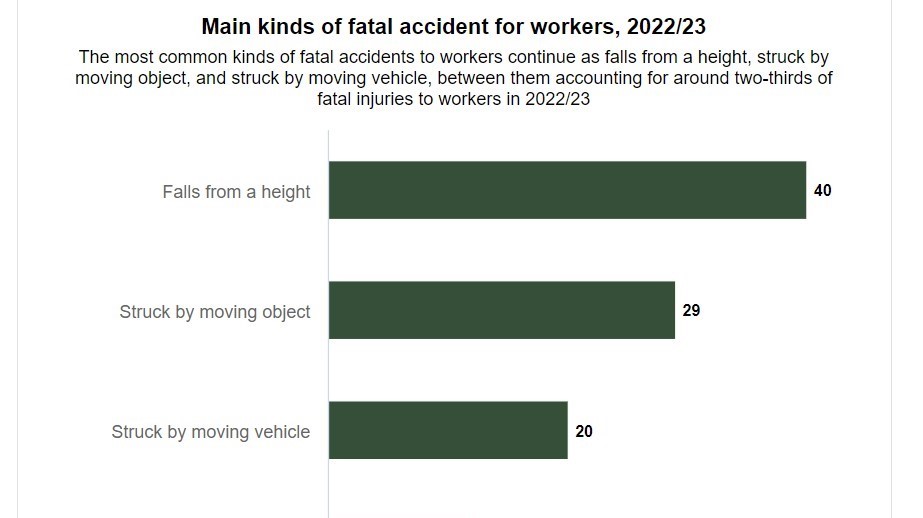
The demands of lone working for the FM
Remote working has become the norm, and with it the nature of facilities management has undergone a significant change. Facilities managers are now often working alone, as are the individuals they are responsible for. Working independently and without direct supervision, lone workers can find their safety and wellbeing are at risk.
Lone working presents several key issues for facilities managers due to the nature of their responsibilities and the potential risks involved. Here are some reasons why lone working is a significant concern for facilities managers.
Safety risks
Facilities managers often work in environments where there are potential safety hazards, such as machinery, electrical systems, chemicals or heavy equipment. Working alone increases the risk of accidents or injuries, as there may be no one nearby to provide assistance in case of an emergency.
Emergency response
In the event of an emergency, such as a fire, medical incident, or security breach, lone workers may not have immediate access to assistance or support. This can delay response times and exacerbate the severity of the situation.
Isolation
Working alone can lead to feelings of isolation and loneliness, especially in large facilities or remote locations where there are limited opportunities for interaction with colleagues. This can impact morale, mental health and overall job satisfaction.
Accountability
Without direct supervision or oversight, lone workers may be less accountable for their actions and decisions. This can lead to lapses in safety protocols, quality standards or compliance with regulations, putting the organisation at risk.
Risk assessment
Conducting thorough risk assessments and implementing appropriate control measures can be more challenging when working alone. There may be limitations in identifying hazards or addressing potential risks without the input and collaboration of others.
Communication challenges
Communication is essential for coordinating activities, sharing information, and responding to issues in a timely manner. Working alone can pose challenges in communication, especially if there are limited or unreliable means of contacting colleagues or supervisors.
Workload management
Facilities managers are often responsible for overseeing multiple tasks and projects simultaneously. Working alone may increase the workload and limit the capacity to effectively manage priorities, leading to potential inefficiencies or delays in completing tasks.
Compliance and legal obligations
Employers have a legal obligation to ensure the health and safety of their employees, including those who work alone. Failure to adequately address the risks associated with lone working can result in legal liabilities, fines, or reputational damage for the organisation.
Addressing these key issues requires careful planning, risk management strategies, and adherence to relevant regulations and best practices to ensure the safety and well-being of lone workers in facilities management roles.
Working alone in facilities management can present unique challenges and considerations, especially regarding safety and efficiency. Here are some tips to help navigate this scenario:
- Safety protocols: Ensure that you're familiar with all safety protocols and procedures relevant to your tasks and the facilities you're managing. This includes knowing emergency exits, first aid procedures and how to handle hazardous materials if applicable.
- Communication: Maintain regular communication with your supervisor, colleagues or a central control room. Check in periodically to update them on your progress and inform them of any issues or concerns.
- Emergency procedures: Be well-versed in emergency procedures specific to your workplace. Know who to contact in case of emergencies and how to respond to different types of incidents, such as fires, medical emergencies or security threats.
- Personal safety equipment: Always use appropriate personal protective equipment (PPE) for the tasks you're performing. This might include safety glasses, gloves, hard hats or protective clothing.
- Risk assessment: Before starting any task, conduct a thorough risk assessment to identify potential hazards and determine the best course of action to mitigate risks. This might involve inspecting equipment, identifying trip hazards or assessing environmental factors.
- Training and certification: Ensure that you have received adequate training and certification for the tasks you're performing. This might include training in equipment operation, maintenance procedures or specialised tasks.
- Buddy system or check-in procedures: Implement a buddy system or establish regular check-in procedures with a colleague or supervisor. This provides an extra layer of safety and ensures that someone knows your whereabouts at all times.
- Emergency communication devices: Carry an emergency communication device, such as a mobile phone or two-way radio, with you at all times. Make sure it's fully charged and in good working condition.
- Stay vigilant: Remain alert and vigilant while working alone, especially in unfamiliar or high-risk environments. Trust your instincts and don't hesitate to report any suspicious activities or concerns to the appropriate authorities.
- Documentation: Keep thorough documentation of your activities, including maintenance tasks performed, inspections conducted, and any incidents or issues encountered. This documentation can be valuable for accountability, compliance, and future reference.
By following these tips and remaining vigilant, you can help ensure your safety and effectively manage facilities even when working alone.
International Workplace’s Lone working training course explores the hazards and risks associated with working alone and the additional controls an organisation should consider in order to promote safe lone working. This course is designed to introduce organisations and individuals to the considerations of lone working, as governed by the Health and Safety at Work etc. Act 1974, and the Management of Health and Safety at Work Regulations 1999.
As well as employers, our Lone working course is suitable for any individual who works by themselves and needs to consider practical steps to reduce the risk to their personal safety and wellbeing. Find out more here.





